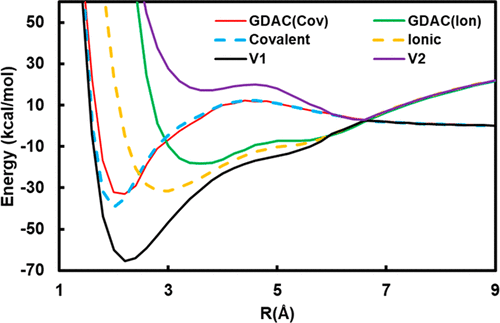Liu, M.; Chen, X.; Grofe, A. Gao, J. Journal of Physical Chemistry Letters, 2018, 9, 6038–6046.
A procedure, called generalized diabatic-at-construction (GDAC), is presented to transform adiabatic potential energy surfaces into a diabatic representation by generalized singular value decomposition. First, we use a set of localized, valence bond-like configuration state functions, called DAC, as the basis states. Then, the adiabatic ground and relevant excited states are determined using multistate density functional theory (MSDFT). GDAC differs in the opposite direction from traditional approaches based on adiabatic-to-diabatic transformation with certain property restraints. The method is illustrated with applications to a model first-order bond dissociation reaction of CH3OCH2Cl polarized by a solvent molecule, the ground- and first-excited-state potential energy surfaces near the minimum conical intersection for the ammonia dimer photodissociation, and the multiple avoided curve crossings in the dissociation of lithium hydride. The GDAC diabatization method may be useful for defining charge-localized states in studies of electron transfer and proton-coupled electron transfer reactions in proteins.

